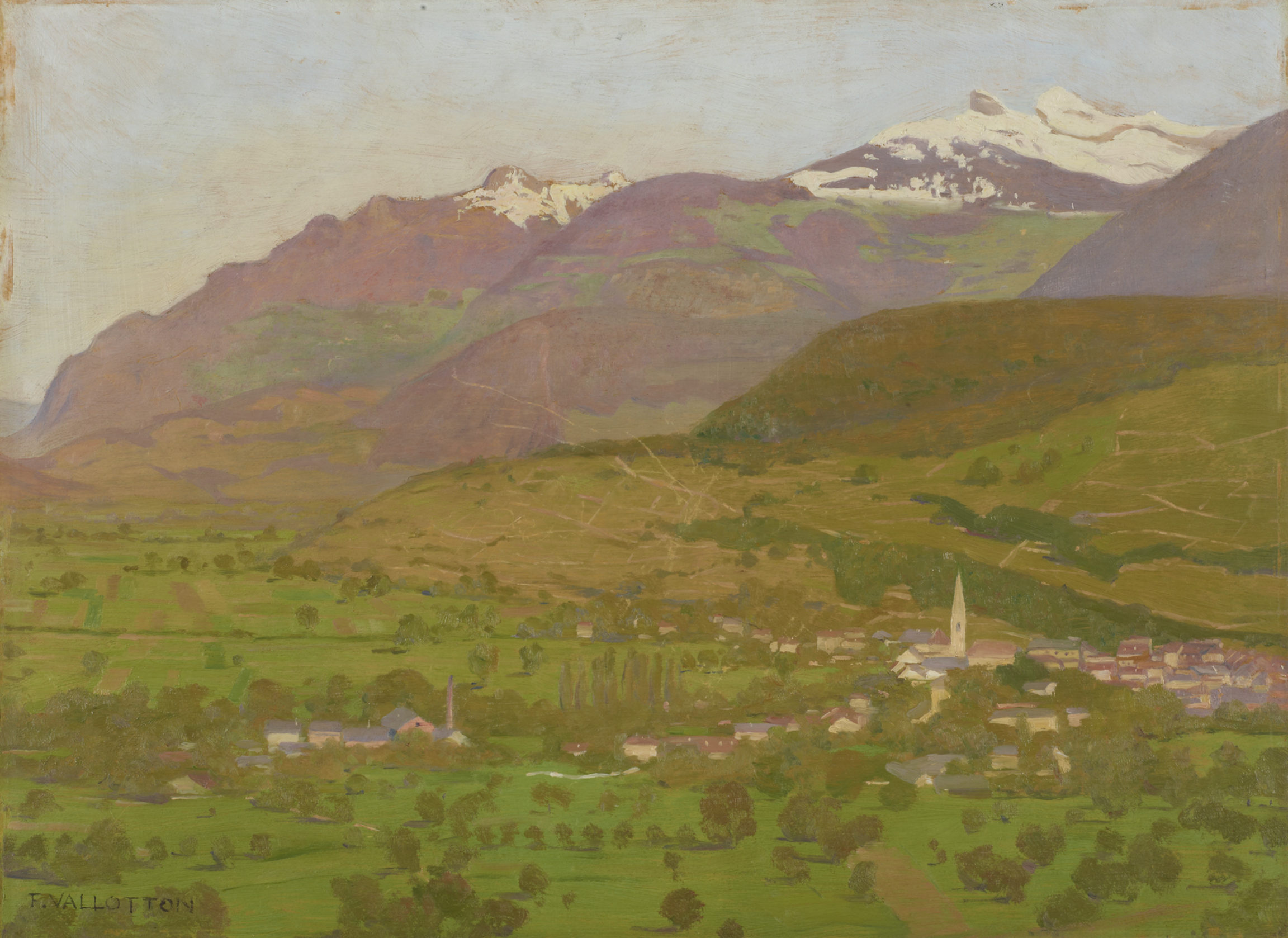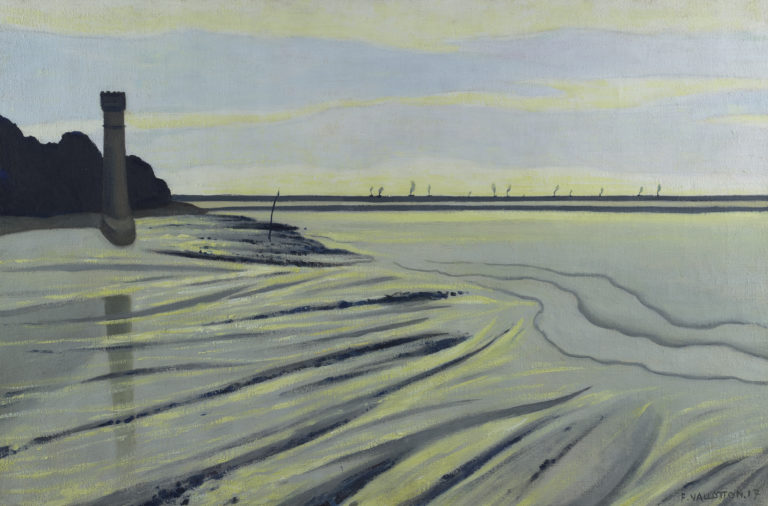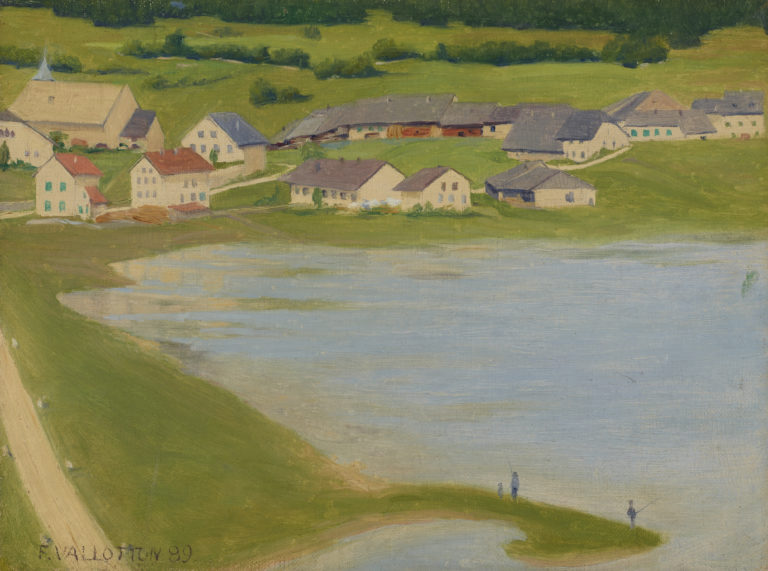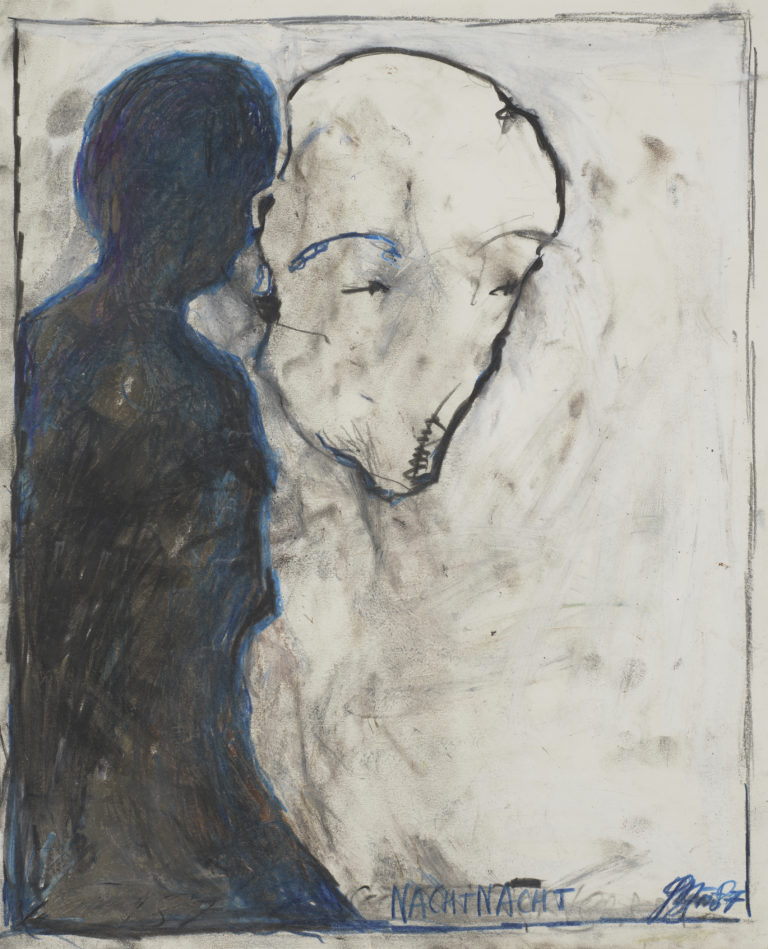Bibliography
Marina Ducrey, in collaboration with Katia Poletti, Katia Poletti, Félix Vallotton, 1865-1925 : l’œuvre peint, 3 vol., Lausanne, Fondation Félix Vallotton, Zurich, Institut suisse pour l’étude de l’art, Milan, 5 Continents Editions, 2005, n° 206.
Sasha M. Newman (dir.), Félix Vallotton, exh. cat. Lausanne, Musée cantonal des Beaux-Arts, Paris, Flammarion, 1992.




Félix Vallotton began spending most of the year in Paris in the 1880s. He would return to Switzerland in the summer months, bringing small pieces of wood or cardboard and paints to the shores of Lake Geneva and the Vaud countryside to paint the landscapes he had grown up in. He laid the scenes down in fluid layers, leaving the untreated wood or card visible beneath the paint in places. While the landscapes of the mid-1890s, featuring juxtaposed swathes of saturated colour, reflect Vallotton’s turn to the Nabi aesthetic, some works, like this view of Bex, stand apart for their acidic colours, slightly misty light, and traditional composition.
Félix Vallotton painted this work for the museum in Lausanne. In 1896, the curator Émile Bonjour was authorised by the Vaud authorities to acquire Vallotton’s 1885 Autoportrait à l’âge de 20 ans (Self-portrait at the age of twenty) with the proviso that the artist also had to contribute a landscape of the Rhone or a view of the village of Bex. Vallotton was thrilled to see his works enter a public collection and chose to paint Bex since he could stay with his parents nearby: he wrote to Édouard Vuillard in September 1896, “I’m going to my parents in Bex tomorrow […] I have to paint a small landscape that has been chosen for me, and then I’ll be returning to Paris on the 2nd or 3rd”. When he arrived in Bex, however, the weather was so terrible he could not paint outside. On September 25, he told Émile Bonjour of the problem, adding he would soon be back in Paris and would not be able to complete the commission. In the end, the sun came out just in time to save the day, and Vallotton painted this view of the village ringed by vines and snow-capped mountains.